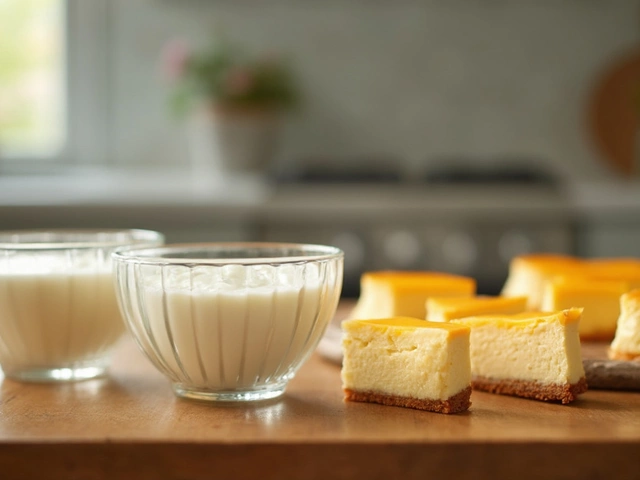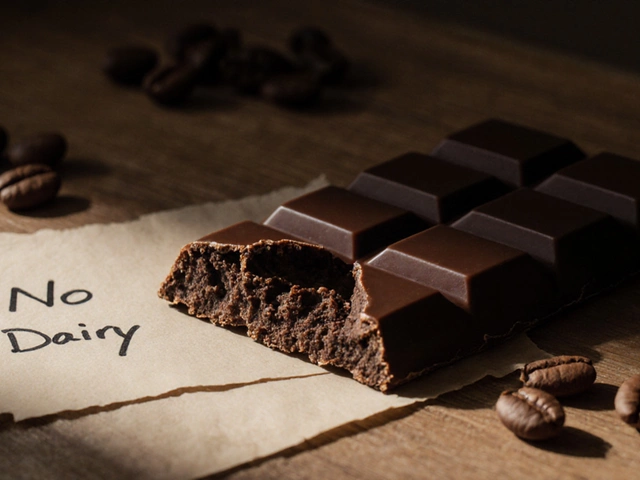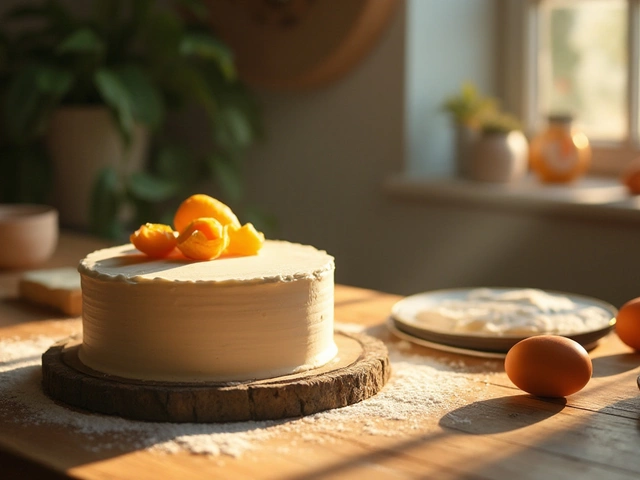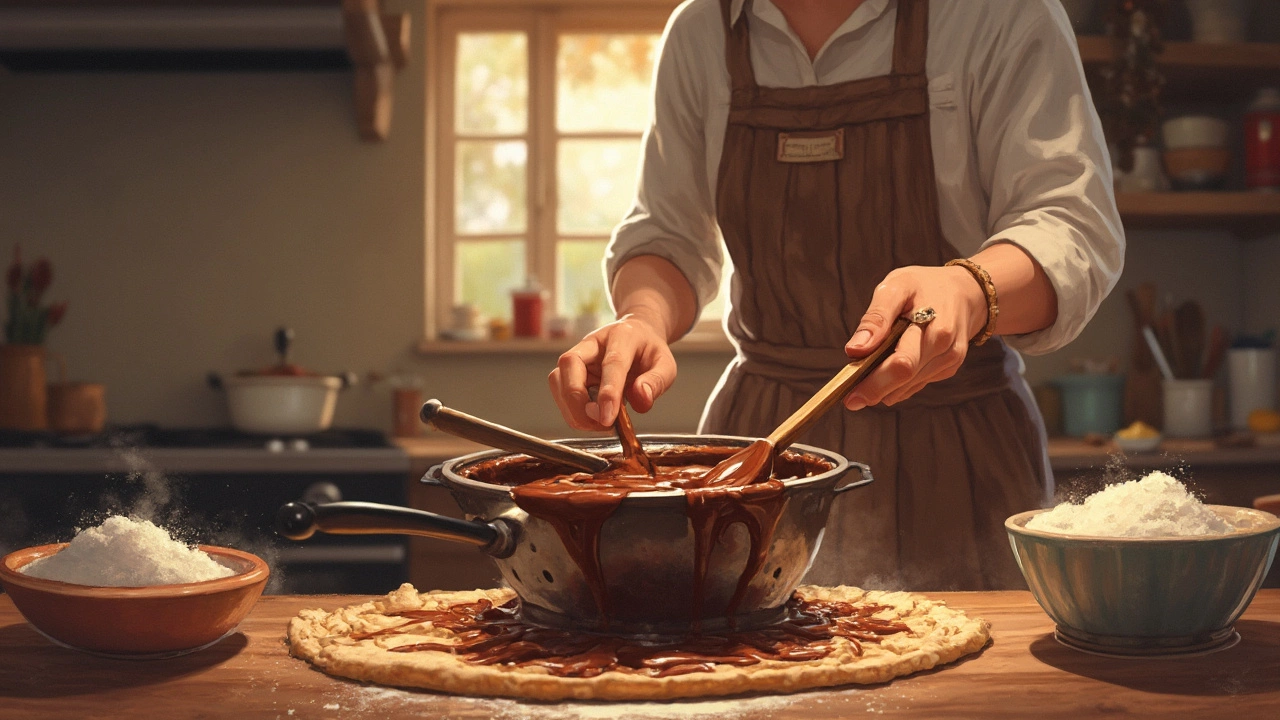
If your fudge ends up with that sandy, gritty texture, you’re not alone. Tons of home cooks have battled with sugary fudge. Most of the time, it comes down to tiny crystals of sugar forming where you don’t want them. The goal? Keep those crystals as small as possible, so every piece is creamy and smooth.
The main culprit is usually rushing or stirring at the wrong time. Letting fudge cool undisturbed until it hits the right temperature is huge—jumping the gun can ruin even the best recipe. A simple tip: use a candy thermometer. Trust it. Even if Aunt Martha never used one, it will make things a lot easier and save you a lot of guesswork.
- Why Does Fudge Get Sugary?
- The Science Behind Smooth Fudge
- Simple Tips for Consistently Creamy Fudge
- Fixing Batch Gone Gritty
Why Does Fudge Get Sugary?
Let’s get real: the reason fudge goes sugary is because of sugar crystals getting out of hand. When making fudge, you want the sugar to stay dissolved in the mix while it cooks, then only form tiny, smooth crystals as it cools. If something goes wrong in the process—like stirring at the wrong time or cooking at a wonky temperature—you end up with big, gritty crystals instead of that silky texture everyone wants.
There’s a bit of science happening in your pot. When you boil the sugar, milk, and butter, everything melts together nicely. Once your fudge mix cools down, sugar wants to start forming crystals again. If those crystals grow too big (which happens if you stir or bump the pan before it cools to the right spot), your fudge will be grainy instead of creamy.
Hard water can make things worse, too. Minerals present in water can affect how sugar settles. Using bottled or filtered water can actually help if you’ve had problems in the past.
- Cooking too fast can mess things up—high heat means bigger crystals.
- Not dissolving all the sugar at the start leads to seedy fudge right from the get-go.
- Stirring too soon while cooling or not cooling enough means sugar finds buddies and clumps together, making crystals you can feel on your tongue.
Ever wonder just how touchy fudge is? In a recent candy-making class, about 60% of beginners got sugary fudge on their first try, purely because they didn’t watch the thermometer or stirred before it was cool enough. It’s that easy to mess up!
The Science Behind Smooth Fudge
If you want smooth fudge, it’s all about controlling sugar crystals. Fudge is basically a cooked mixture of sugar, milk, and fat, but getting that creamy bite isn’t just luck—it’s basic chemistry at work.
Here’s what really matters: when you heat sugar and water (and maybe milk), the sugar dissolves. As the temperature rises, more sugar dissolves in the liquid. When you reach soft-ball stage—around 234-238°F (112-114°C)—your syrup has the right amount of water left. Go above this temp, and you get hard, crumbly fudge. Below it, fudge won’t set right and might stay gooey.
The game-changer happens when the mixture cools. If you stir too soon, big sugar crystals form. Stir at the right time—once it’s cooled to about 110°F (43°C)—and the crystals stay tiny, making the fudge smooth. Fudge makers swear by patience here.
- Don’t scrape the sides of the pan when pouring out the cooked syrup. That stuff likely has early-formed crystals that’ll ruin your texture.
- Adding cream of tartar or a touch of corn syrup helps prevent big crystals. They both help break up sugar molecules, making it harder for them to clump together.
- Butter isn’t just for richness. It coats the crystals, keeping their size small and the final product smooth.
Just to keep it real, even pros sometimes mess up and get gritty fudge. It’s a tightrope—you want the sugar to crystalize, but not until the right moment. The difference between that dreamy texture and a sandy bite is usually a degree or two and a few minutes.
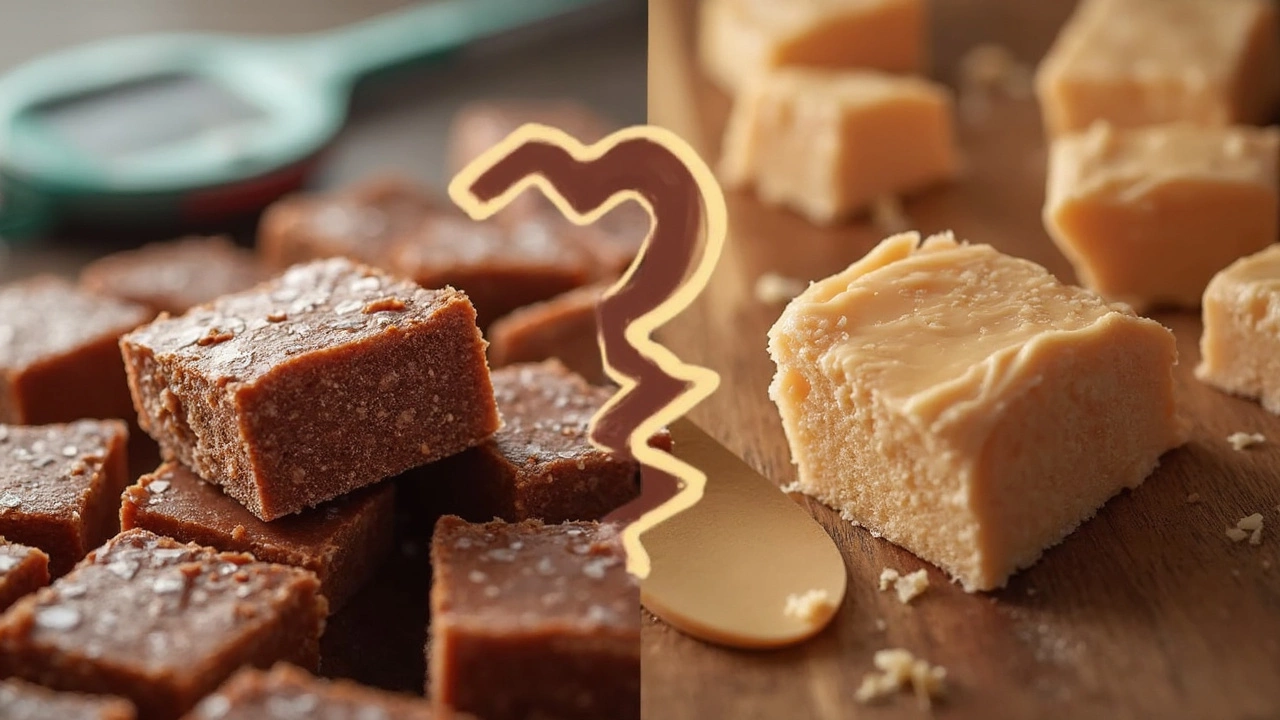
Simple Tips for Consistently Creamy Fudge
There’s not much worse than facing a pan of fudge that’s gritty instead of creamy. Want that smooth, old-school texture every time? Start by knowing that temperature and timing matter more than any fancy ingredients.
Here’s how you can get fudge right, batch after batch:
- Don’t skip the candy thermometer. Seriously, guessing doesn’t cut it. Heat your mixture until it hits precisely 234–238°F (soft-ball stage). Even a few degrees off can wreck the texture. Cheap thermometers often drift, so check with a glass of ice water first if yours is old.
- Let the mixture cool—without stirring—until it drops to about 110°F. This part feels slow, but moving too soon forms big, crunchy crystals. Just leave it alone on the counter. If you blast it with a cold bath, you risk even more grittiness.
- Use clean, dry utensils. Water droplets or leftover sugar can seed crystals. Wipe down the sides of the pan with a wet pastry brush while the mixture heats to wash away any stray sugar.
- Add ingredients like butter and vanilla after cooking but before beating. Make sure they’re fully mixed in before you start working the mixture.
- Beat the fudge only when it’s cooled enough. Beat by hand or with a mixer on low, but stop as soon as it loses its shine and thickens. Over-mixing after that will make it weirdly solid.
Want to see how the details stack up between creamy success and gritty fails?
| Step | What Works | What Causes Grit |
|---|---|---|
| Heating | 234–238°F, no shortcuts | Guessing or overheating |
| Cooling | Let cool undisturbed | Stirring too soon |
| Mixing | Beat only at right temp, stop at matte look | Over-mixing or under-mixing |
If you’ve ever wondered how fudge-makers get it so perfect at your local candy shop, this is their secret. Stick to these steps, and you’ll pull off fudge recipes you’ll actually want to share—or maybe keep for yourself.
Fixing Batch Gone Gritty
Don’t toss that pan if your fudge turns out grainy—there’s still hope! Grainy texture means the sugar crystals got out of control, but it’s a common fix in candy making. Here’s how to rescue your batch without wasting all those ingredients.
- Fudge fix number one: Scrape the fudge back into a heavy saucepan. Add about 1/4 cup water or milk for each pound of fudge you made. This extra liquid helps dissolve the sugar crystals and gives you a second shot at getting it smooth.
- Set the pot over low heat and stir gently until everything melts again. Be patient. Don’t crank the heat, or you’ll risk burning the sugar or scalding your milk.
- Once it’s fully dissolved and smooth, bring the mixture to a boil. This time, watch the temperature closely with a candy thermometer. For most fudge recipes, you’re aiming for that classic 234°F (soft-ball stage). Don’t skip this step—it makes a difference.
- Take the pan off the heat and let it cool, completely undisturbed, to about 110°F. Stillness is key here, so sugar crystals don’t form while it cools.
- When it hits the right temp, beat the fudge until it thickens and loses its glossy shine, then pour it into your pan.
If you find this fix doesn’t fully solve the problem, try using the gritty batch as a topping for ice cream or brownies. No shame in making it work for another dessert. Next time, sticking to the basics—slow cooling, no stirring while hot, and using a thermometer—will help you skip the rescue mission altogether.

